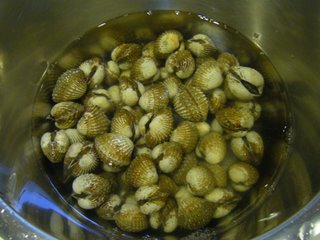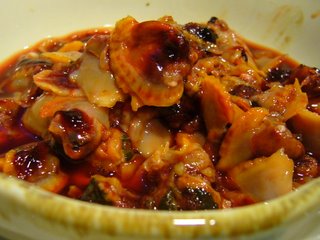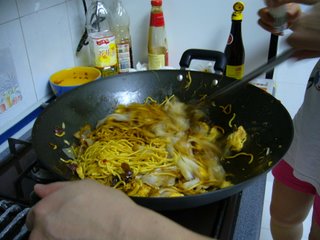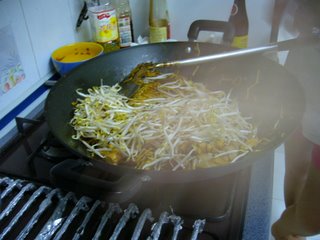Not the kind made with white rice, no matter how fragrant it is supposed to be.
Something with more fibre, more nutrients, is infinitely more appealing.
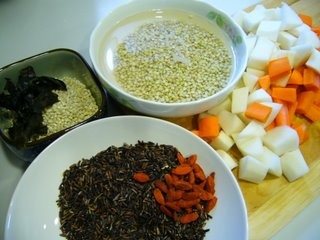
Use kelp for its flavour and minerals. Full of iodine, potassium, magnesium, calcium and iron.
Barley, buckwheat (1) and black rice (2) - not pulot hitam - for carbohydrates, protein, phytonutrients, fibre and other good stuff.
Radish and carrots for more fibre, vitamins and beta-carotene.
Finally some wolfberries to nourish the "yin" and blood, and strengthen the eyes, liver and kidney.
Put everything into a big pot, add water and bring to a boil.
Lower the heat but keep it bubbling so that the grains won't stick to the pot.
Add more water if necessary.
When everything is soft, the porridge is ready.
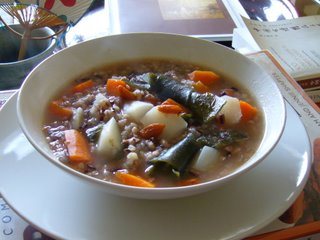
Eat it steaming hot with grilled salmon for a dose of omega-3.
And some steamed cabbage and bok choy for more vitamins and fibre.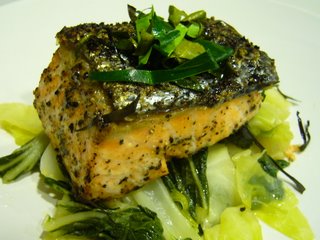
Rub the salmon with salt and freshly-ground black pepper. Line a pan with foil.
Place some shredded kaffir lime leaves on the foil, top it with the salmon followed by more leaves.
Place the fish under a grill till the skin is crispy.
When the salmon is done, place it on a bed of steamed vegetables and squeeze some lime juice over it.
For dessert, have a juicy mango.
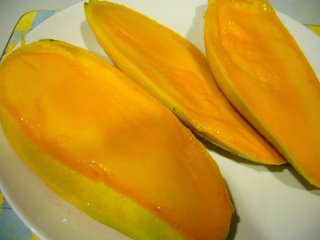
It's rich in vitamins A, B and C.
Some people believe it aids digestion and is good for the heart and the brain.
Notes
1] Buckwheat is a fruit seed related to rhubarb and sorrel. Buckwheat flour is used to make Japanese soba. The seed form is available at the dry goods section of NTUC Fairprice Supermarket.
2] I bought the black rice at the basement supermarket in Siam Paragon shopping centre in Bangkok. Yes, I shopped for groceries when I visited Thailand.
